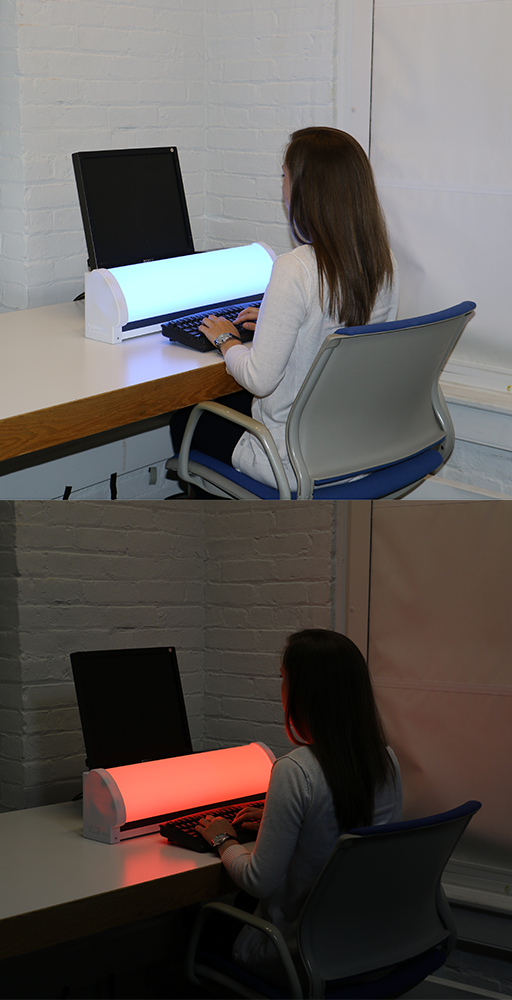Lighting Research Center (LRC) continues to conduct studies to learn how light impacts alertness during the day and sleep quality at night in daytime office workers. In its latest press release, LRC revealed that using blue light in the morning and red light in the afternoon helps office to increase energy.
The study field tested a novel luminaire developed by the LRC to promote circadian entrainment and alertness in the office environment. 19 participants from three U.S. Department of State office buildings in Washington, D.C., completed the 3-week study.
During the test, the participants were exposed to morning saturated blue light delivering a circadian stimulus (CS) of 0.4 in the morning, polychromatic white light, delivering a CS of 0.3 at midday and saturated red light with a CS close to zero in the afternoon. Objective and subjective measures of rest–activity, sleep, vitality, and alertness were used to evaluate the lighting interventions.

(Image: LRC)
Results show that participants exhibited more consolidated rest–activity patterns, indicating better circadian entrainment, and woke up earlier during the intervention compared to baseline. The morning blue light appears to have advanced participants’ circadian phase, causing participants to wake up earlier in the morning. The afternoon red light elicited an acute alerting response close to the post-lunch dip (around 3 p.m.), reducing subjective sleepiness and increasing subjective vitality and energy.
These field results are the first to demonstrate that red light in combination with ambient white light provides an effective alerting stimulus, and support the inference that light exposures, when properly applied, can promote circadian entrainment and increase alertness.





 CN
TW
EN
CN
TW
EN






